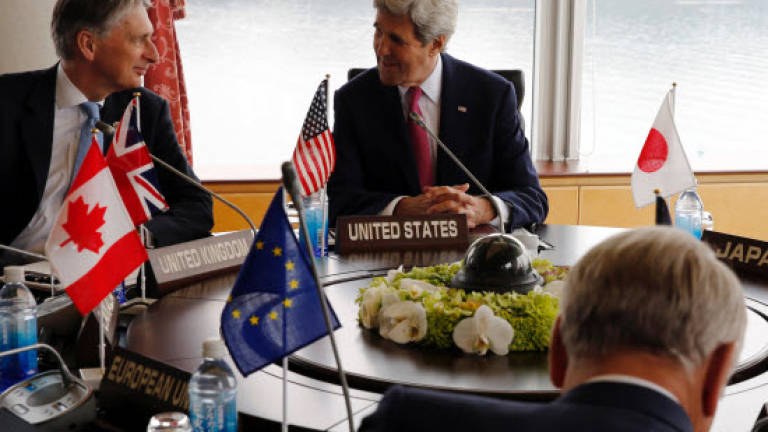Kerry arrives in Japan for landmark Hiroshima visit

HIROSHIMA, Japan: John Kerry arrived in Japan on Sunday for a Group of Seven meeting in Hiroshima, marking the first-ever visit to the atomic-bombed city by a US secretary of state.
Kerry landed at a US military base west of Hiroshima from Afghanistan for the two-day G7 gathering set to discuss a host of global issues though the symbolism of his visit is overshadowing the broader diplomatic agenda.
Kerry's trip is seen as possibly paving the way for Barack Obama to become the first serving US president to journey to the thriving metropolis next month when he visits Japan for the G7 Summit.
The Hiroshima meeting begins Sunday and will also host diplomats from nuclear-armed Britain and France, as well as Canada, Germany, Italy and Japan.
The gathering is part of the run-up to the G7's rotating annual summit, scheduled this year from May 26-27 in the Ise-Shima region between Tokyo and Osaka.
The US secretary of state, Britain's Philip Hammond, France's Jean-Marc Ayrault and other ministers are expected to discuss global hotspot issues including the Middle East, the migration crisis, the conflict in Ukraine and terrorism.
Host Japan also hopes to highlight other issues, such as rising territorial tensions in the South China Sea and North Korea's nuclear sabre-rattling.
But what has captured the imagination of the Japanese public is the location and what they hope will be greater understanding of their staunch anti-nuclear stance as the only country to suffer atomic attacks.
Japanese foreign minister Fumio Kishida, who represents Hiroshima in parliament, also hopes to issue a "Hiroshima Declaration" at the meeting to promote nuclear disarmament.
Kerry and the other G7 foreign ministers are scheduled to visit the Hiroshima Peace Memorial Park, which houses the ruins of the iconic domed building gutted by the blast, and an accompanying museum.
The first American bomb on Aug 6, 1945, killed 140,000 people in Hiroshima, including survivors of the explosion who died soon after from severe radiation exposure. Three days later another blast killed some 74,000 people in Nagasaki.
Japan gave up the fight six days after Nagasaki, foreswearing militarism and reviving itself as an economic dynamo protected, ironically, by the nuclear-armed United States.
Indeed, when asked about its place under Washington's nuclear umbrella, Kishida said Japan knows the world's security realities, citing North Korea, for example, as a key threat.
Recent comments by Republican US presidential candidate Donald Trump suggesting that he could accept a nuclear-armed Japan have alarmed the country's political establishment.
Washington hopes to use Kerry's visit – he will be the highest ranking US official in Hiroshima since then Speaker of the House Nancy Pelosi in 2008 – to stress the tragedy of the war and also highlight Obama's anti-nuclear stance, expressed in a famous speech in Prague in 2009. — AFP